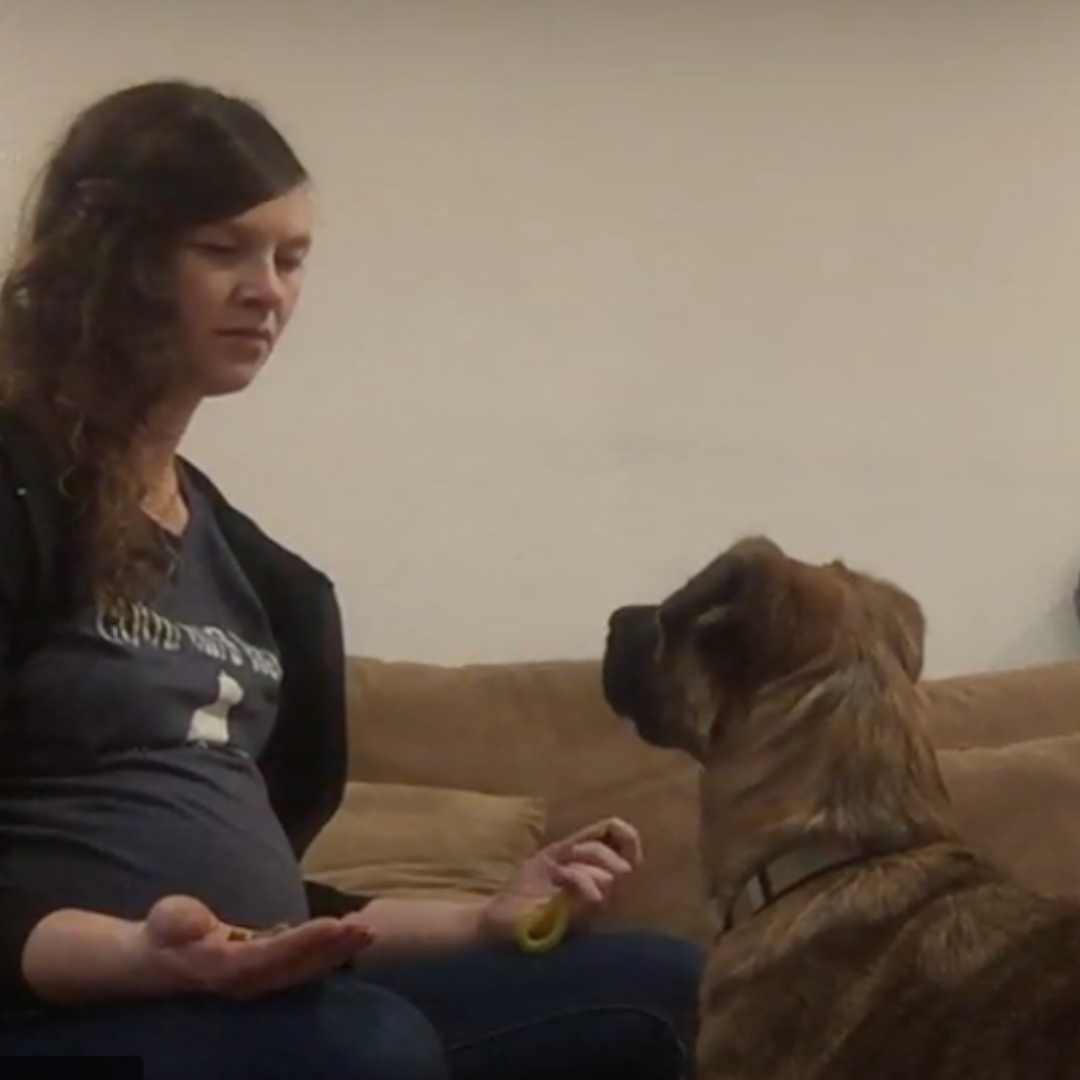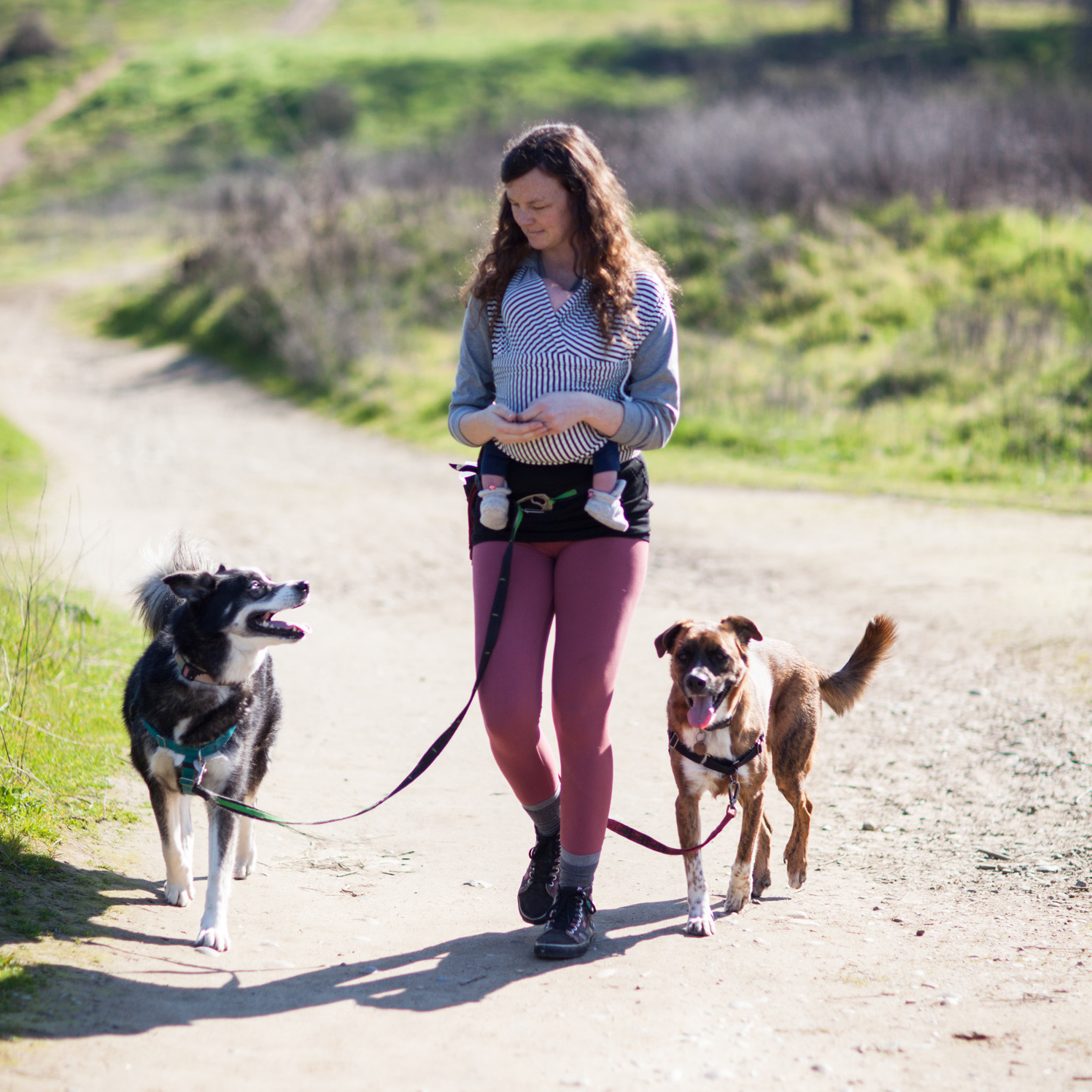If your dog steals food, loves to go counter surfing, or enjoys licking dirty dishes, you're going to want to stop that behavior sooner rather than later.
Hopefully, you've already taught your dog the game in part one of this Food Manners training and your dog is consistently offering you eye contact when presented with a handful of food. If not, no worries, go here to learn the game to help stop your dog from stealing food in our first Food Manners guide.
If your dog has successfully mastered the game already, woohoo! It's time to start generalizing that behavior so your dog gives you eye contact around food in many different locations and situations.
Give me an example
Most of the skills we teach our dogs are taught under very specific conditions and directions from dog behavior experts. Generalizing is the process by which dog owners can add variation to the behavior to help a dog learn that the skill is still relevant in different situations. For example, if you teach your dog to "stay" in the kitchen when food is out on the counter, but if you take the food and your dog into another room he/she might have a tendency to break the stay because your dog doesn't understand the behavior is still relevant in other locations.
Tell me more
It's important your dog understands how to generalize behaviors so they can be more flexible and responsive in the world around them. Tips from dog trainers are only helpful if your dog learns those tips for real life! Generalizing can be a daunting training process for pet owners so let's break it down into simple methods you can use to help set your dog up for success in new situations and environments.
Your Dog's Plan
Stop! Don't read this long article. Instead, get everything you need to know, including all advice on Food Manners, in a customizable step-by-step plan for your dog created by our community of certified trainers and nutritionists.
Step 1: Change the food tempting your dog
One of the first ways to teach your dog generalizing is by changing the food item presented. We don't want to teach your dog that redirecting their focus from a handful of dog food like kibble is the only valuable behavior. Food variation is a good thing! Kibble, or something on the more "meh" end of the food spectrum, is a good starting point because we want to set our dogs up to succeed. But once that gets really easy, we can begin to present more valuable items to help our dogs generalize the behavior to all types of food. This can mean both higher value dog treats and "human food." I can promise your dog will be excited about this new treat and food testing opportunity!
Tell me more
Remember, you may have to relax criteria for this new training challenge - meaning while your dog may be the champion of offering sustained eye contact when presented a handful of kibble, when presented with a handful of freeze dried beef liver, we may need to go back to clicking for moving the snout away, and then work back up to eye contact. Sometimes delicious treats and food are just too tempting at the start!
Try this
Grab a treat more high value to your dog than kibble. Go back to part one of this Food Manners training and repeat the steps in the game with the more high value treat.
Food Manners
Interested in Food Manners? Follow topics you're interested in to customize your dog’s step-by-step plan so it's most helpful and tailored to your dog when you're ready to get started.
Step 2: Change where the food is tempting your dog
Not stealing food directly out of your hand is one thing, but what about not stealing food on a dinner table, kitchen counter, or high chair? In the below video, we start working with food in my hand, then I switch hands (which throws my dog off - he moves towards the treats briefly), and then I transition to placing the treats on the coffee table.
You will likely want to start this part with the lower value food at first (i.e. go back to dog food). And, you may need to begin by keeping a hand over the treats. By changing the presentation, we're changing the rules of the game. So it's totally okay to make it a little easier again until your dog "gets it."
Tell me more
In general, it's important to break things down into small, doable pieces for your dog. Adding too many nuances at once is really confusing and can be a recipe for confusion and frustration for your dog. And again as dog lovers we want to avoid punishment at all costs! It's not only unpleasant but it doesn't work for teaching new behaviors.
As you move up to higher value food items like human food, be sure your dog is looking to you first and foremost for permission to take the food item. That way, if something happens down the line (your dog steals a bite or two), we can be sure your dog is not stealing food without permission.
Try this
Pick a place you would rather your dog doesn't steal food from like the kitchen counter, dinner table, or coffee table. Rather than holding the kibble in your hand as you have been, put it on your designated place. Repeat the steps in the game outlined in part one of this Food Manners training, covering the dog food with your hand at the start if needed.
Step 3: Putting the where and which food together
Once you've worked on each of these things separately, you can begin to slowly mix the elements in Step 1+2 together. This means using more high value food items (like human food) on new places like kitchen countertops, counter edges, the dinner table and other surfaces. Practicing with the specific surfaces where you typically leave food lying around in real life is very valuable information to help your dog with training.
Tell me more
Many dogs automatically head to a baby's high chair as it's obviously easy pickings to steal food, so this could be a great practice area. Practicing this instinctual behavior ahead of time, without the real life addition of a messy baby, who likely also needs your attention, is a good way to get a foundation set for the behavior you'd like to see from your dog down the line. The good news if you're expecting is that the baby won't be making high chair messes right away, so there's plenty of time to work on this if your dog steals food!
Try this
Put steps 1+2 together! Grab some high-value treats and practice the game outlined in part one of this Food Manners training at a new place in your home.
Manners
Need more advice? Browse all guides in the Manners Channel on topics like Go To Mat, Food Manners, Party Manners, Stay, Public Manners, Travel Manners, and Basic Manners - created by our community of certified experts for you and your dog.
Side note on stationing
At the end of the below video, you can see my dog ultimately just goes and lies on his bed. This is one of the really cool ways that learned behaviors can interplay with one another. Stationing is something he's been heavily reinforced to know. When my dog realizes there's no need to actively steal food, he decides to try and cash in on a well "paid for" behavior. I'd say this is the dog equivalent of working smarter not harder! He decides to see if he can earn a reward for lying on his bed in this situation and the answer is HECK YES!
Going to his bed in the presence of accessible food (on the coffee table) is a great choice, and one that I'm willing to "jackpot" (provide lots of treats) as a reward.
If you haven't already, you can begin to teach your dog stationing behaviors with my next guide here or in my other guides on teaching your dog to go to bed or mat.
So give it a shot! And remember, management is your best friend. If you know your dog is not ready for a particular challenge, then use a leash, baby gate, x-pen, or doors to prevent access and stop your dog from giving him/herself a counter surfing open invitation to all of your good food!
Is your dog prone to food theft? Learn actionable strategies to put a stop to when your dog steals food in this video.
Choose how you'd like to view this guide's video.

Next up in the Manners Channel on Dogly
The next guide in Food Manners here on Dogly will teach you how to stop your dog begging for food. Yes, begging can be cute but there's usually something better your dog can be doing than begging for the food on your plate.
Go there next or if you'd like more personalized training we can always work 1-1 together.

